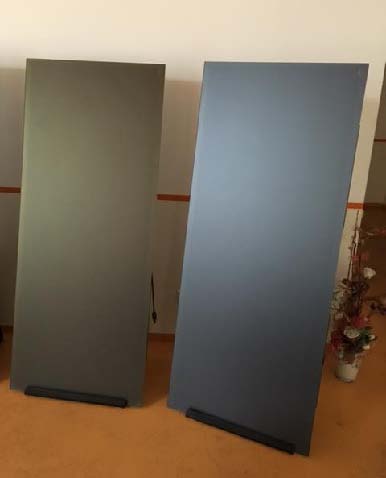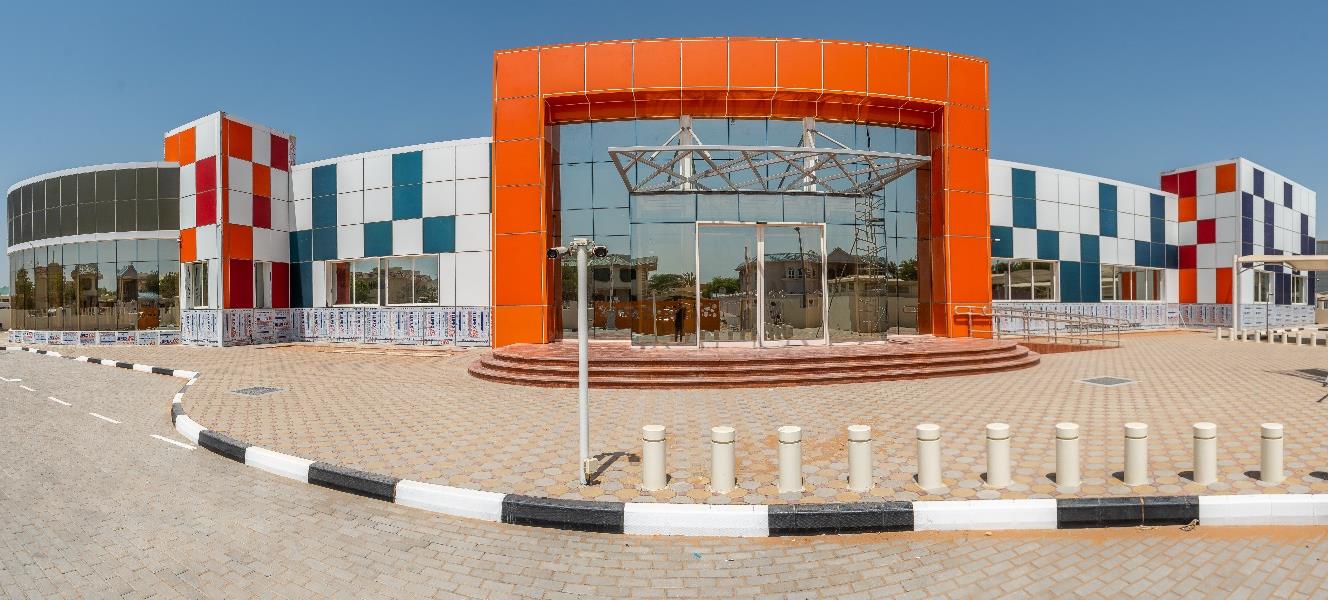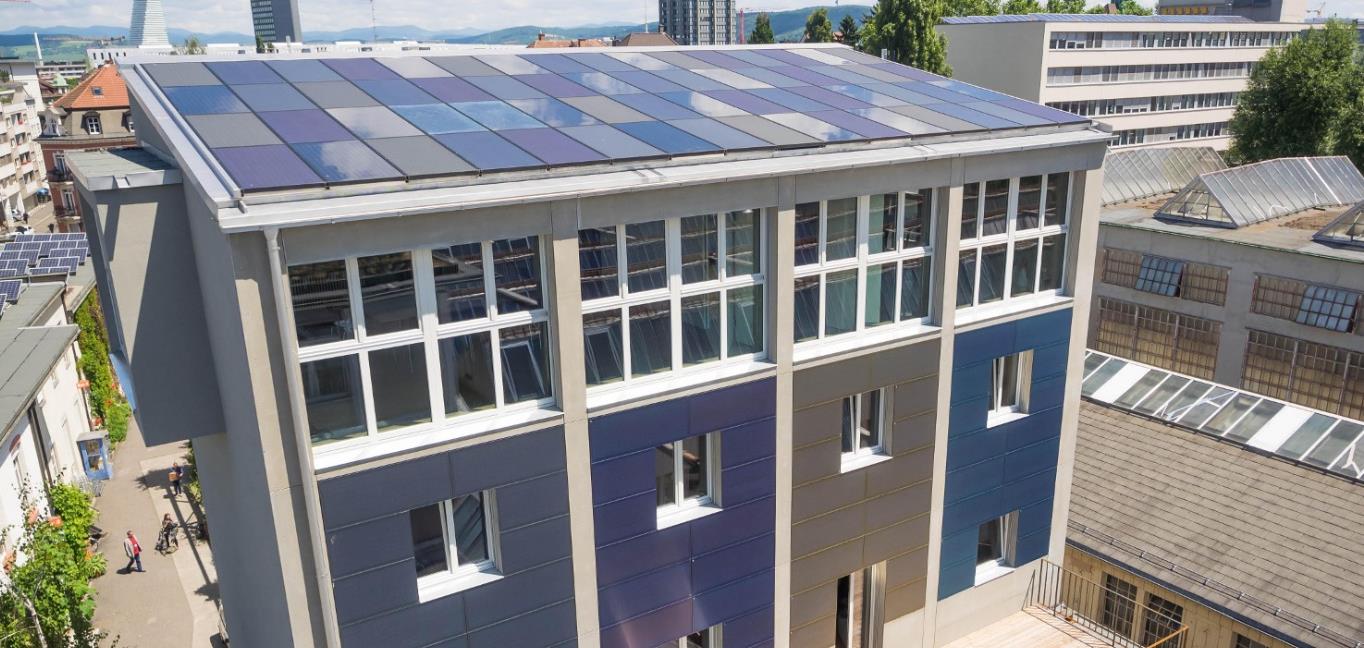Brief Concept Description
Kromatix modules are BIPV panels available in different sizes and colours. The physical vapor deposition on solar glass with specific atomic designs allows to produce coloured solar glass that can be coupled with any type of PV technology. The treatment of the outer glass surface results in diffused reflection, which prevents glare effects, masks PV cells and bus bars and offers a pleasant visual effect. The modules are designed for a full integration on buildings’ facades and roofs, and guarantee high aesthetics, efficiency and durability.

Figure 16. Kromatix modules, CIGS solar cells, grey and gold.
Architectural and Technological Integration into the Envelope
Kromatix panels are fully integrated in the buildings’ envelope and replace traditional façade materials with the additional benefit of producing electricity from solar energy. Kromatix panels are cut-to-size for each project so to guarantee a full geometrical design flexibility. Kromatix modules are available in a variety of colours (grey, blue, bronze, brass etc.) and offer a very eye-appealing appearance as they seem to change in colour based on the viewing angle, providing to viewers a pleasant dynamic effect. Durability and maintenance costs are the same as those of a normal passive glass façade.
The design of the modules is studied so that functional and performance requirements imposed by both construction regulations (for example fire regulations, glass thickness, wind load) and PV regulations are met. BIPV norms are written or in adaptation in different countries. Kromatix panels are installed as normal passive façade elements on a metallic sub-structure that supports the single envelope elements. The electrical cables need for the operation of the collectors are fixed to the sub-structure. The BIPV installation is completed by the connection to a solar inverter and an electricity meter.

Figure 17. Kromatix installation at Copenhagen International School in Copenhagen, Denmark.

Figure 18. Kromatix installation on the façade of a kindergarten in Dubai, UAE.

Figure 19. Redevelopment of a coal silo in Basel, Switzerland.
Further Reading
Comany website: https://www.swissinso.com/